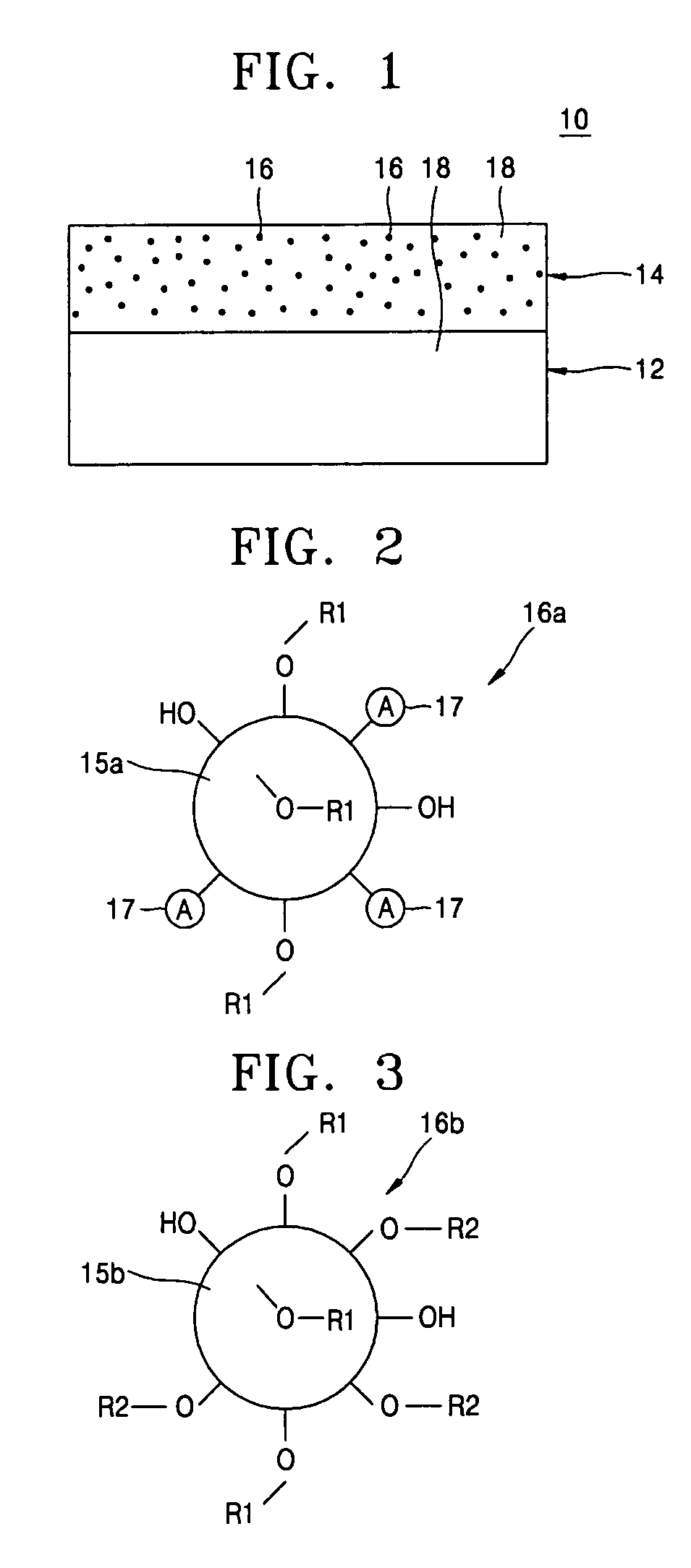Lithium cationic single-ion conducting filler-containing composite polymer electrolyte for lithium secondary battery and method of manufacturing the same
a polymer electrolyte and lithium secondary battery technology, which is applied in the direction of non-metal conductors, non-aqueous electrolyte cells, cell components, etc., can solve the problems of difficult to increase the capacity of lithium secondary batteries, low ionic conductivity of solventless polymer electrolyte at room temperature, and increase the manufacturing cost. , to achieve the effect of preventing an increase in inner resistance, good mechanical strength and increasing high-rate discharge characteristics
- Summary
- Abstract
- Description
- Claims
- Application Information
AI Technical Summary
Benefits of technology
Problems solved by technology
Method used
Image
Examples
example 1
[0067]In order to synthesize a lithium cationic single-ion conducting inorganic filler with the same structure as shown in FIG. 2, 10 g of a hydrophobic surface treated silica (TS-610, CAB-O-SIL®) was dispersed in 400 mL of 1,2-dichloroethane and then vigorously stirred in a reactor at more than 400 rpm under a nitrogen atmosphere. At this time, a solution of chlorosulfonic acid (Cl—SO3H) in 1,2-dichloroethane was gradually added to the resultant mixture and stirred for about 24 hours. A resultant polymer obtained by filtration of the reaction solution was dried, washed three times, and neutralized in a lithium hydroxide (LiOH) solution, to finally obtain a lithium cationic single-ion conducting inorganic filler.
example 2
[0068]In order to synthesize a lithium cationic single-ion conducting inorganic filler with the same structure as shown in FIG. 3, 10 g of hydrophilic silica (AEROSIL® 200, Degussa) with only a surface hydroxyl group (—OH) was dispersed in 400 mL of 1,2-dichloroethane and then vigorously stirred in a reactor at more than 400 rpm under a nitrogen atmosphere. At this time, a solution of chlorosulfonic acid (Cl—SO3H) and chlorotrimethylsilane (Cl—Si(CH3)3) in 1,2-dichloroethane was gradually added to the resultant mixture and stirred for 24 hours. A resultant polymer obtained by filtration of the reaction solution was dried, washed three times, and neutralized in a lithium hydroxide (LiOH) solution, to finally obtain a lithium cationic single-ion conducting inorganic filler.
example 3
[0069]In order to manufacture a composite polymer electrolyte for a lithium secondary battery, first, a copolymer of vinylidene fluoride and hexafluoropropylene was dissolved with the lithium cationic single-ion conducting inorganic filler obtained in Example 1 as shown in FIG. 2 in acetone used as a co-solvent to obtain a uniform mixed solution. Here, the lithium cationic single-ion conducting inorganic filler was contained in the mixed solution in an amount of 5 wt %, based on the total weight of polymers in the mixed solution. The mixed solution was cast on a porous polyethylene film with a thickness of 25 μm and the co-solvent was then evaporated. As a result, a composite polymer matrix bilayer structure in which a compact microporous polymer matrix was coated on a surface of the porous polyethylene film was obtained. The obtained composite polymer matrix structure was transferred into a glove box of an argon atmosphere and then immersed in an electrolyte solution in which 1M li...
PUM
| Property | Measurement | Unit |
|---|---|---|
| thickness | aaaaa | aaaaa |
| thickness | aaaaa | aaaaa |
| electrode potential | aaaaa | aaaaa |
Abstract
Description
Claims
Application Information
 Login to View More
Login to View More - R&D
- Intellectual Property
- Life Sciences
- Materials
- Tech Scout
- Unparalleled Data Quality
- Higher Quality Content
- 60% Fewer Hallucinations
Browse by: Latest US Patents, China's latest patents, Technical Efficacy Thesaurus, Application Domain, Technology Topic, Popular Technical Reports.
© 2025 PatSnap. All rights reserved.Legal|Privacy policy|Modern Slavery Act Transparency Statement|Sitemap|About US| Contact US: help@patsnap.com



